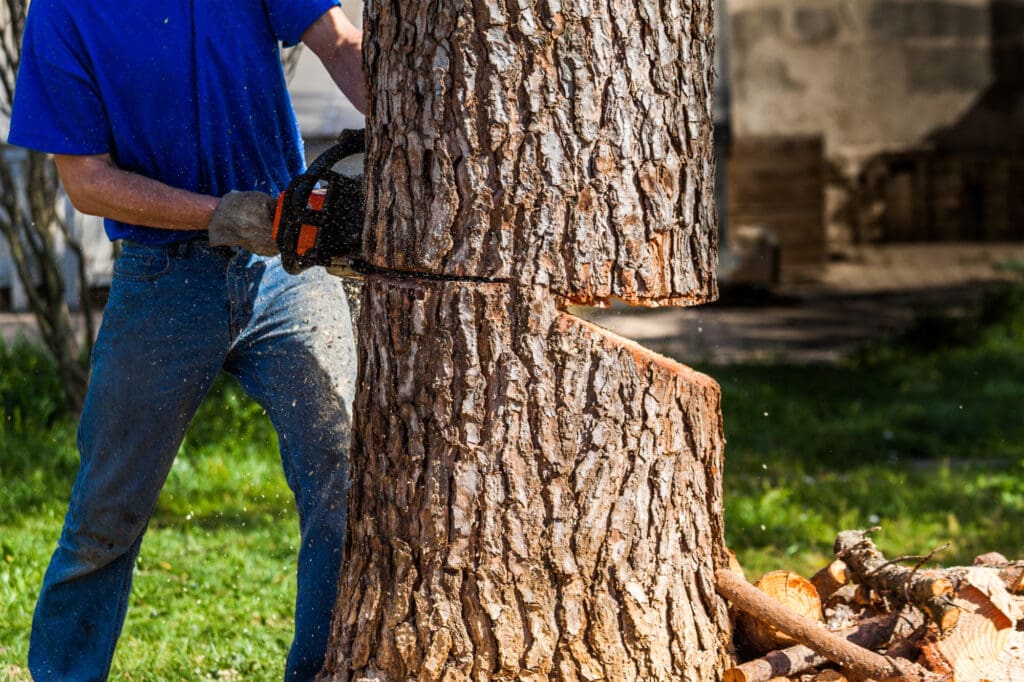
Did you know that if you cut down a tree without a permit you risk getting walloped with hefty fees and penalty fines? Often, homeowners assume that trees on private property are theirs to do with as they please, but this isn’t always the case.
Trees are a community asset in many areas of the country. Local and state rules regulate their maintenance and removal. Before homeowners can cut one down, they may need a tree removal permit.
But how do you know if you need a permit? Where do you apply for a permit if you do need one? Here’s a comprehensive breakdown of what every homeowner needs to know.
Why Do I Need Permission to Cut Down a Tree on My Property?
Trees offer more than just curb appeal or convenient shade for your yard. They add real financial value to your property. Properties with trees routinely:
- Sell at higher price points
- Sell faster than properties without trees
- Use less energy than properties without trees
Importantly, however, your trees’ value extends beyond your property. Collectively, a region’s trees:
- Prevent erosion
- Improve air quality
- Control stormwater run-off
- Keep property values high
- Help maintain biodiversity
Trees are so integral to communities at large that some cities and states regulate tree trimming and removal to protect the public interest.
Regulated Trees
In most cases, tree regulations apply specifically to Heritage Trees and Significant Trees.
Heritage trees are particularly old trees. They may have historic value or be a species of tree that is vanishing, endangered, or rare.
Significant trees are trees deemed valuable for reasons other than their age. Guidelines might identify these trees by size, height, or representativeness of “perfection” for their species.
In either case, the exact rules about which trees are under protection will be spelled out in city or county ordinances. A permit is required before any protected tree can be removed or substantially trimmed or altered.
The penalty for cutting a tree without a permit is usually levied in the form of fines, sometimes up to three times the tree’s estimated value.
>> Learn about DC Special Tree Removal Permits
When You Don’t Need a Tree Removal Permit
In general, there are three sets of circumstances in which homeowners can reliably remove trees without a permit.
- Homeowners live in an area that does not regulate tree removal
- The tree in question represents a safety risk
- The tree unsafely interferes with or is poised to interfere with power lines
In areas where trees on private property are not regulated or where homeowners have no Heritage or Significant Trees that fall under local regulations, property owners are free to handle tree maintenance and removal as they see fit. No permits are required.
Nearly all authorities recognize the importance of immediately addressing the safety threats caused by trees that are:
- Diseased
- Damaged (such as by storms)
- Dying
- Dead
In these cases, homeowners are typically free to hire a certified arborist or tree removal company and have the tree removed without waiting for a permit or other permission.
In cases where the tree would otherwise be covered by regulations, property owners may need to notify authorities of the tree’s condition and the reasons for its removal. They may also need to document their claim with photos or documentation from the arborist or company that removed it.
Finally, when trees interfere with power lines the local power company may step in to remove them. Alternatively, homeowners may cut them back or remove them. Permits are necessary under these circumstances, as the work will need to be done to ensure the tree is kept within code as it relates to power lines.
Where to Find Tree Removal Ordinance Information
Tree removal ordinance information is available from your local county or city website or main information line. Most authorities now post permit applications online for digital download or easy printing. Each application will provide details on:
- Where to turn it in
- When to turn it in
- What documentation, if any, must accompany the application
- How long the approval process takes
You can also find information on tree removal regulations by state by contacting your local tree service provider. They will be able to guide you through the regulations that apply to you.
Frequently Asked Questions
Below are some of the most frequent questions homeowners have in respect to tree maintenance and removal. If you have questions not answered below, contact a reliable tree maintenance company for more information.
Q: Do I Need a Permit to Cut Down a Tree on My Property in Virginia
A: For the most part, there aren’t any regulations in Virginia that require you to have a permit to cut down your trees; however, there are a few exceptions.
Q: How Do I Get a DENR Permit to Cut Trees?
A: Check your city or county website for a permit application and submission instructions. Alternatively, contact your local arborist or tree service provider for assistance.
Q: What Happens if You Cut Down a Tree Without a Permit?
A: You can face penalty fines and fees if you removed a tree that was protected or subject to regulation. These can run as high as three times the estimated value of the tree, so it is important to check before removing trees to avoid these steep costs!
Q: Can I Remove a Tree From My Front Yard?
Where in your yard a tree is located matters less than the size, type, and age of the tree and where you live. The tree’s proximity to power lines may also be relevant. Before removing any trees, check your local ordinances or talk to a tree service company just to be sure.
Schedule a Consultation Today
Trained and experienced tree service professionals can take the risk and confusion out of tree removal permit applications. They can also help you protect your trees and keep them in their best condition year-round.
Reserve an appointment today to meet with one of our Certified Arborists and get the information you need to make the most of your trees and protect yourself from costly mistakes.
Call us at 703.573.3029 or book an appointment online to get your free tree removal estimate.
